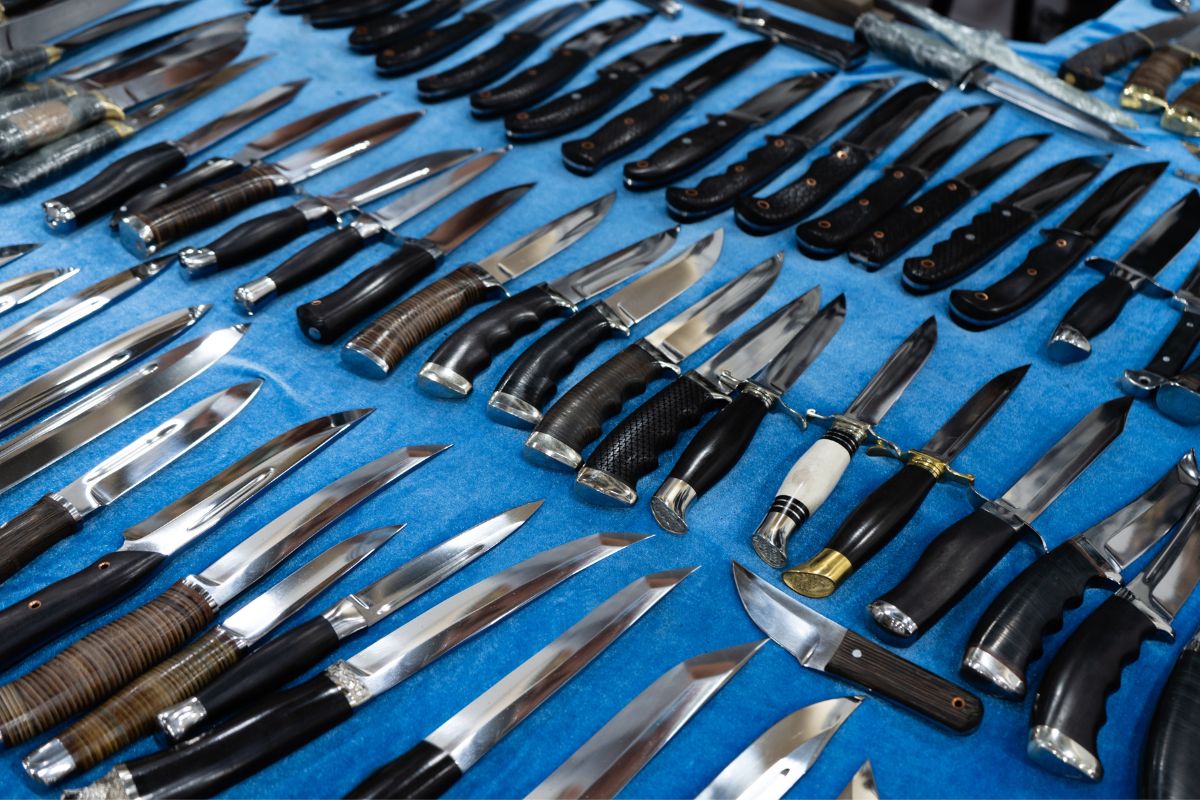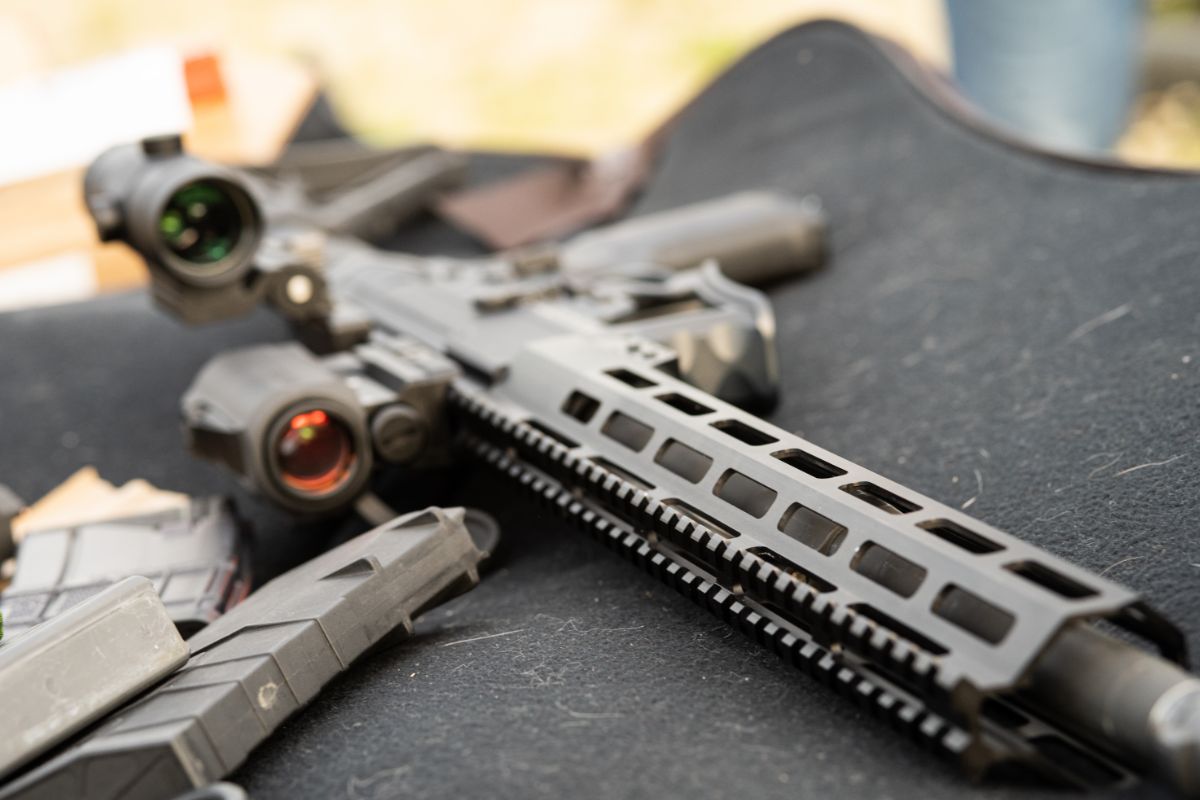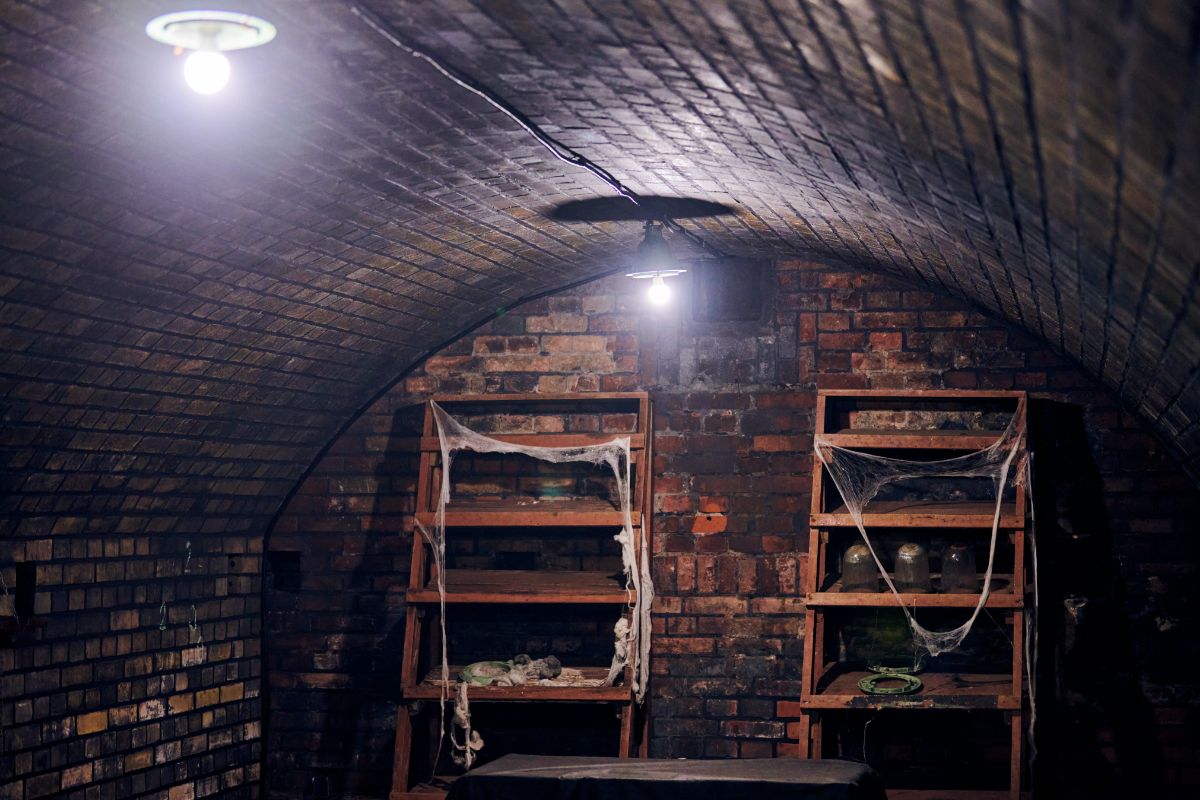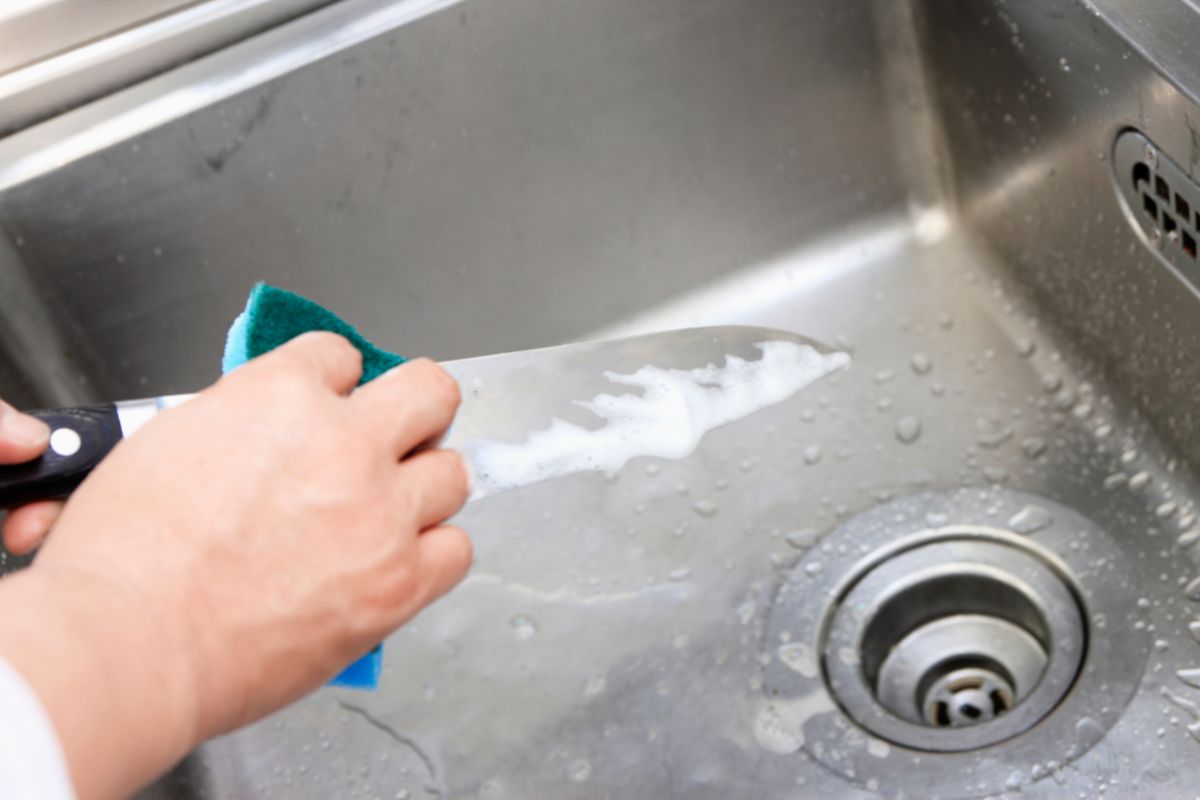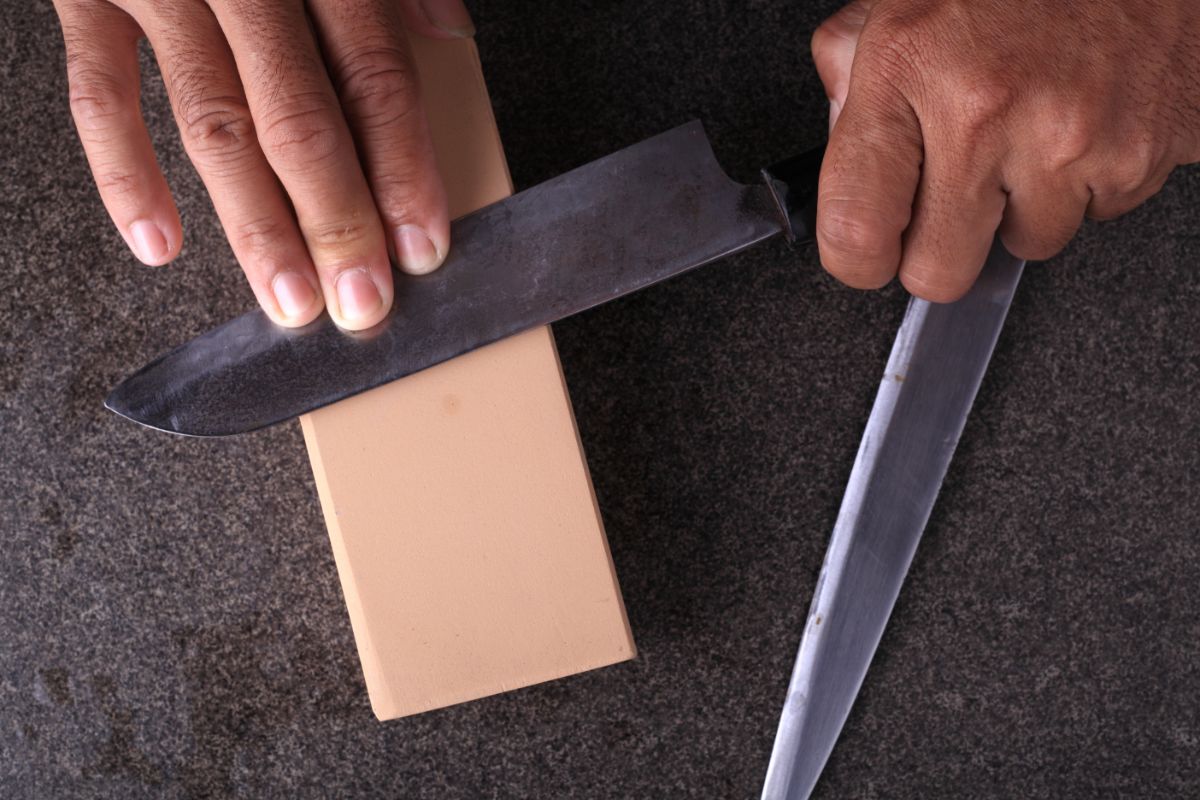It’s very common that after a while, you’ll discover your serrated knife isn’t working as well as it once did.
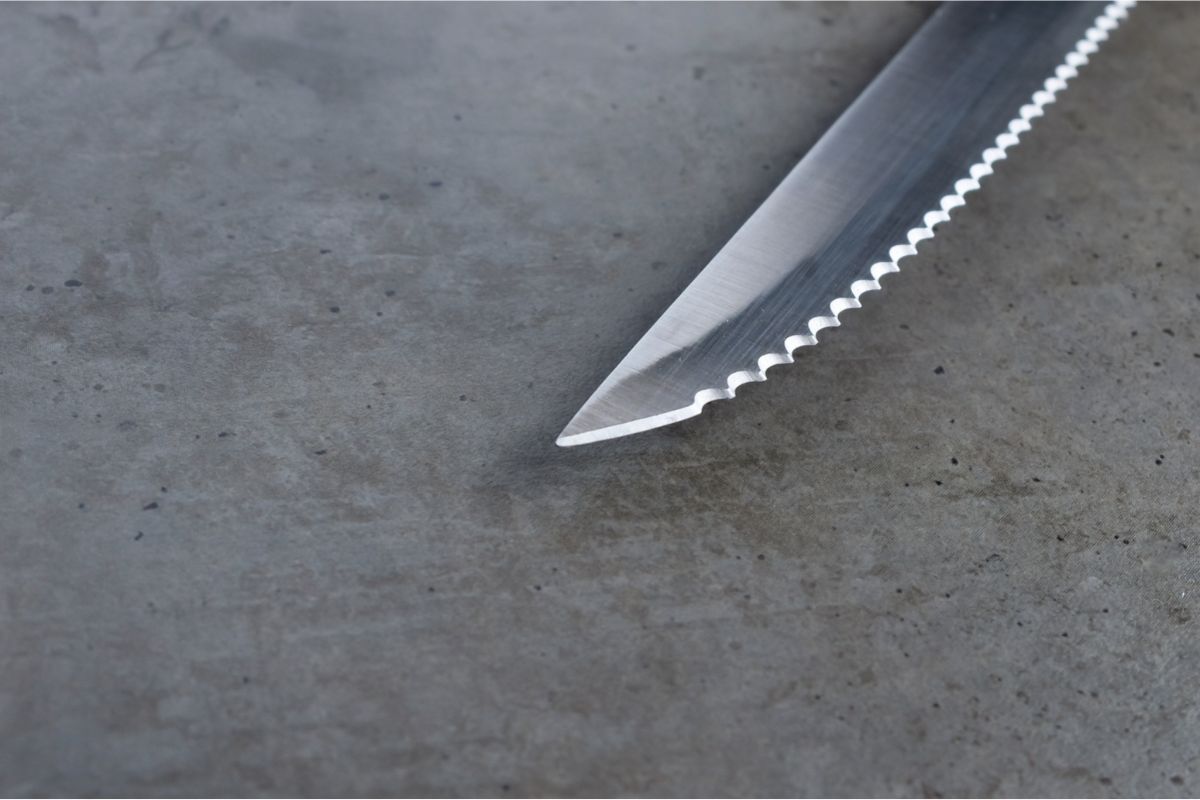
If you slice through a piece of bread and find crumbs on your counter when it used to go clean through, your serrated knife may need to be sharpened.
Here is how to sharpen a serrated knife.
Different Types Of Serrated Knife
The serrated edge is ideal for cutting through foods with hard exteriors and soft inside, such as bread, as well as those that are mushy, such as tomatoes, because putting effort on the sharp points on the blade edge fractures the surface of the item.
Meanwhile, the sections of the blade between the serrations (gullets), let the blade glide easily through the food.
While the bread knife is the most common form of serrated knife, serrated blades exist in a variety of sizes for specific jobs.
Bread Knife
Bread knives are meant for slicing various varieties of bread, with the sharp edges of the serrations cutting through the hard outer crust, such as that found on baguettes, but bread knives can also cut neatly through cakes, pizza, pies, and even fruits.
A decent bread knife will generate fewer crumbs and will not squish the bread as it cuts. Bread knives often have offset handles to prevent your knuckles from hitting the bread board as you get closer to the bottom.
Steak Knife
The purpose of a steak knife is to cut through steak and other types of meat that are too tough or thick to be sliced with a dinner knife (You might want to check out When Must A Knife Be Cleaned And Sanitized).
They come in varieties with plain edges as well as versions with micro and macro serrations. Serrated steak knives are frequently less expensive than steak knives with plain edges that can be sharpened and are not always made to be sharpened.
Tomato Knife
Usually between 15 and 20 cm long, tomato knives are shorter than bread knives and frequently finish in a tip with a sharp fork that makes it easier to pick up things that have been thinly sliced, like tomatoes.
Once more, the tomato’s tough outer shell is sliced through by the serrated edge without the tomato being crushed and losing all of its flavorful juice.
When slicing tomatoes, a well-sharpened knife with a plain edge will always perform better than a serrated knife. If your plain edge knife is dull, however, a serrated knife is preferable.
Types Of Serrations
As well as there being different types of serrated knives, there are also different types of serrations which have their unique uses.
Double Edge Serration
This is when the blade has serrations on both sides, frequently with different-sized serrations. On less expensive blades, this kind of serration is frequently observed. These knives unfortunately can’t be sharpened.
Single Edge Serration
This form of serrations have a flat blade on one side of the blade and a serration on the other side. This kind of serration is prevalent on high-quality bread and tomato knives.
You can easily sharpen this kind of serrated blade if there is still enough depth in the serrations.
Micro Serration
Steak knives and less expensive bread knives frequently have micro serrations. They are made from low-quality steel and may be identified by their sharp, jagged cutting edge. Additionally, these serrations are not intended to be sharpened.
What Makes A Serrated Knife Dull?
You might be surprised to realize that, most of the time, the cutting board underneath, not the food you’re using the blade on, is what causes blades to get dull.
The edge of your knife will inevitably suffer each time it passes through a piece of food and comes into contact with the surface of the cutting board on the other side, possibly bending it over backward. This can be prevented by using a manual knife sharpener, such as an honing steel or ceramic honing rod.
Another possibility is that the cutting board’s sharp edge has become rounder as a result of being struck against it for such a prolonged period of time.
The metal will need to be physically reshaped in certain circumstances by being grinded for a while. You’ll need a sharpening stone for this.
How To Sharpen A Serrated Knife
Sharpening a serrated knife requires the use of a sharpening rod, which is similar to an honing steel but smaller and narrower, and it tapers to a tip, allowing for different thicknesses along the shaft of the rod.
This is useful since the serrations on different knives are varying widths, and you want to apply the portion of rod that best fits your knife’s serrations. Steel, ceramic, and even diamond sharpening rods are available.
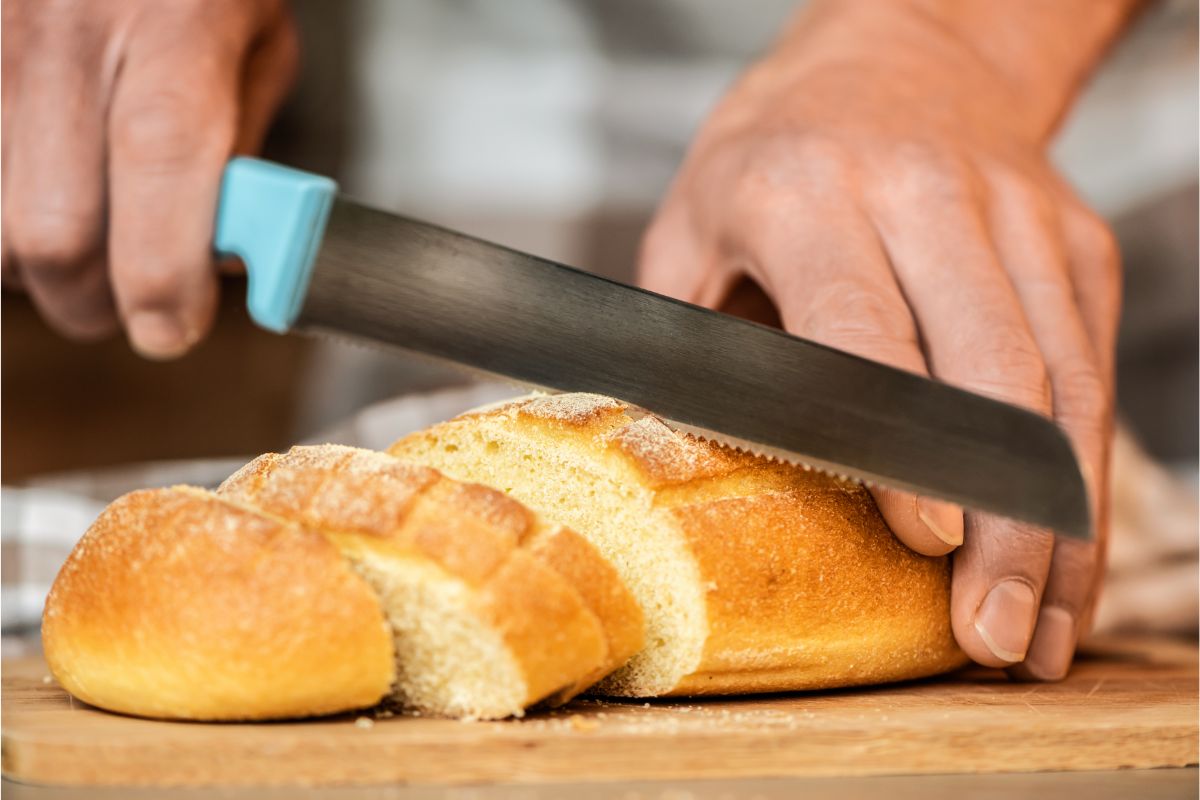
Simply pull the rod through the serrations while it is attached to the serrations. Maintain the correct angle by keeping the rod flush with the bevel.
It doesn’t matter which way you drag the rod, but for your own safety, draw it away from the blade so you don’t slide and hurt yourself.
Before going on to the next serration, give it four or five strokes. As you can see, if your knife has 30 or more serrations, this will take some time. But it’s a simple enough procedure.
When you’re through, flip the knife over and sharpen the flat side of the blade using a standard sharpening stone or a piece of fine-grit sandpaper. This is to smooth off the burr you’ve created on the knife’s edge.
Finally, rinse and dry the knife as normal, and you’re finished.
Summary
If your serrated knife requires more pressure to use, leaves a lot of crumbs, slips off of the things you are trying to cut or smashes things instead of running cleanly through them – then it is a clear sign that it is in need of sharpening.
Once you know how to do it, sharpening a serrated knife is very straightforward, with the best method being the use of a honing rod.
You must pay attention to the type of serration your knife has though as it’s sharpening requirements may differ. Some serrations can’t be sharpened at all.
- How To Make A Quick And Easy DIY Toilet For Camping - September 19, 2022
- How To Use A Knife For Self Defense - September 19, 2022
- How To Help The Elderly Recover From A Disaster - September 19, 2022

